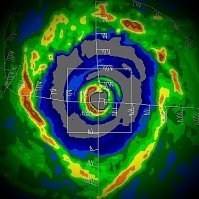-
Posts
4,715 -
Joined
-
Last visited
Content Type
Profiles
Blogs
Forums
American Weather
Media Demo
Store
Gallery
Everything posted by Windspeed
-
An absolute monster wedge presentation on radar as you're ever going to get...
-
- 164 replies
-
- 1
-

-
- tennesse
- mississippi
-
(and 6 more)
Tagged with:
-
Good lord...
- 164 replies
-
- 1
-

-
- tennesse
- mississippi
-
(and 6 more)
Tagged with:
-
Incredible presentation on radar...
-
[emoji102]
- 164 replies
-
- tennesse
- mississippi
-
(and 6 more)
Tagged with:
-
Debris up to 20k ft.
-
[emoji102]
-
Warnings are real-time as cells evolve. Meso scale discussions and lead time watches are warranted based on synoptic reasoning and conditions that have been suggested by high res modeling and severe parameters. Two seperate entities. Too early to downplay threats when it's not even 22z yet for central areas.
- 164 replies
-
- tennesse
- mississippi
-
(and 6 more)
Tagged with:
-
MRX briefing for middle-to-eastern portions of the Valley...
- 164 replies
-
- 1
-

-
- tennesse
- mississippi
-
(and 6 more)
Tagged with:
-
You can already see suspect upstream cells organizing that will lead downstream into the region of concern. We're no where near out of the woods.
- 164 replies
-
- 1
-

-
- tennesse
- mississippi
-
(and 6 more)
Tagged with:
-
Brian Emfinger's drone footage of the tornado near Silas, Alabama: https://www.facebook.com/PhotojournalistBrianEmfinger/videos/amazing-close-range-tornado-via-drone/921564038673445/
-
Circulation looks to be getting stronger.
-
Things are ramping in MS and AL fast. A second PDS Tornado Watch incoming for areas north and west of the current one.
-
-
Hurricane Committee discusses record-breaking 2020 season, plans for 2021
-
Not to completely divert off-topic here but I think we can colonize with domes and perhaps even produce atmosphere before we can forcefully manipulate the randomness of chaotic liquid flow eddies between low and high pressure systems. Perhaps even being able to make a planet breathable before we can control the thermal-coupled dynamics between the Earth's oceans and resultant drivin lapse rates into its atmosphere. That is some serious crazy physics control at that point that might not come into human or AI control until far later into advancements of space exploration and settlement that we are a long ways off from achieving. Take a planet like Venus, for example. Yeah. Yikes. We've got a long way to go before we can simply snuff out a macro system like a Category 5 hurricane.
-
If humans or its resulting AI civilization doesn't extinguish / destroy itself, it is hypothetically possible that some sentient intelligence will be able to control the planet's weather at some point in the distant future. However, in the shorter term, it is likely unachievable from an macro engineering scale and far more realistic that we merely take better actions to protect coastal communities and advance their preparedness. I mean, that is if you even give any credence or thoughts to the Kardashev scale.
-
U.S. federal territory is now included in landfalls. Probably should have always been if costing American citizens / taxpayers direct to indirect casualties and economic impacts. That being said, PR may end up being an actual state at some point anyway. As for the late season fireworks, other than the outrageous 2017 Cape Verde season, seasons over the past decade have seemingly experienced intense hurricanes at a later date. I am a little reluctant to say it is entirely due to climate change because this might be an episodic cyclical period that has occurred in previous centuries or beyond the scope of good shipping reports / meteorological data. However, I am not saying it isn't due to climate change. There are a lot of variables and perhaps climate change is having an influence on mid-season / early Cape Verde seasonal shear patterns that wanes later in September, allowing for an active October. Perhaps it has just been a stretch of bad luck in randomness or statistical probability? I still expect seasons like 2004 and 2017 for a more atypical active Augusts and early September CV season. There is no doubt the overall trend has swung later into the season at least on a recent decadal timescale however.
-
Yeah this unfortunately has the look of at least an EF3. Definitely a sigtor event.
-
Where are you located,@jaxjagman ?
-
Wow... Jeez...
-
Ugh...
-
73 dBZ on that squally linear cell south of Tellico Plains.
-
Suspicious rotation near Germantown.



